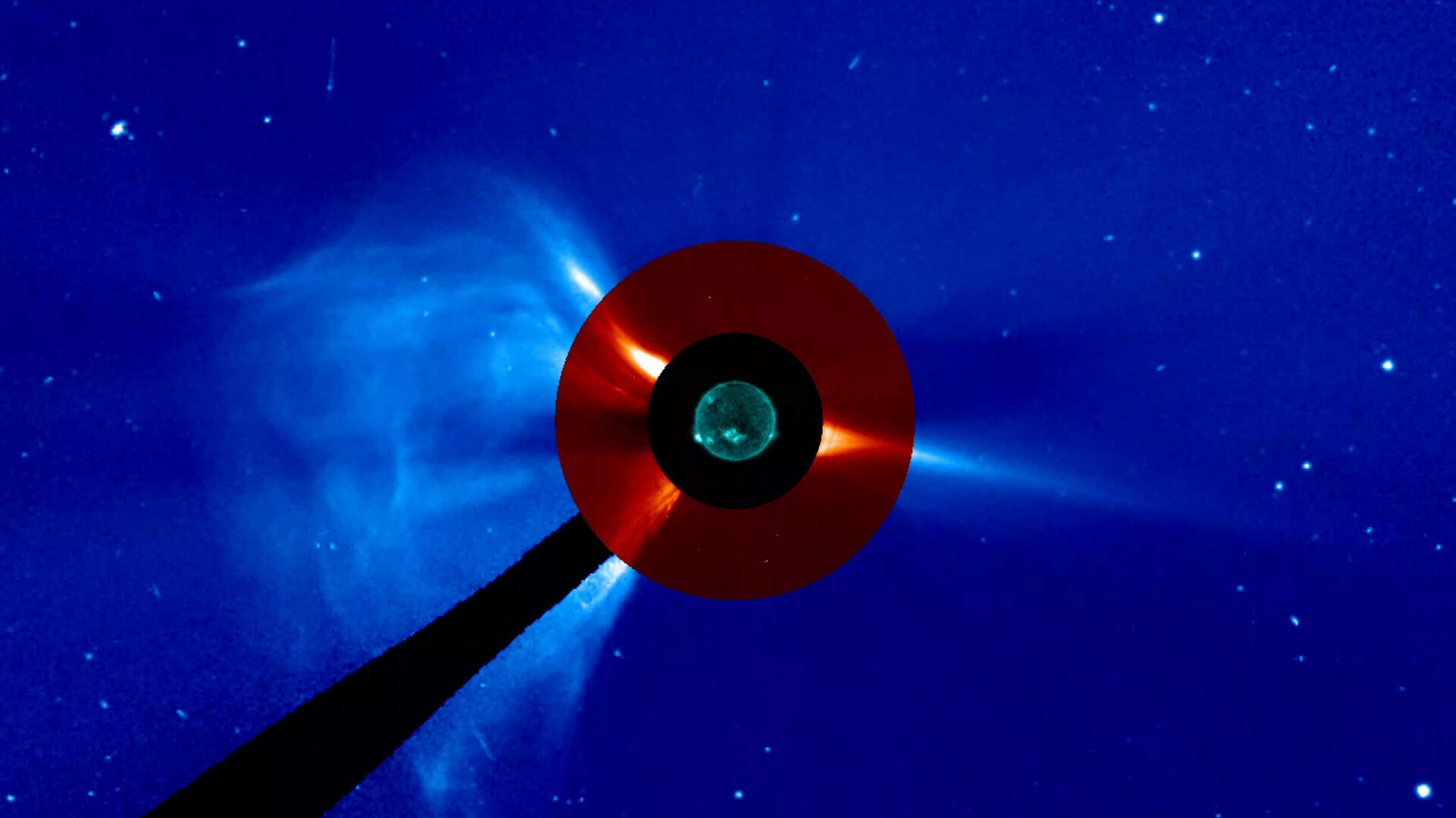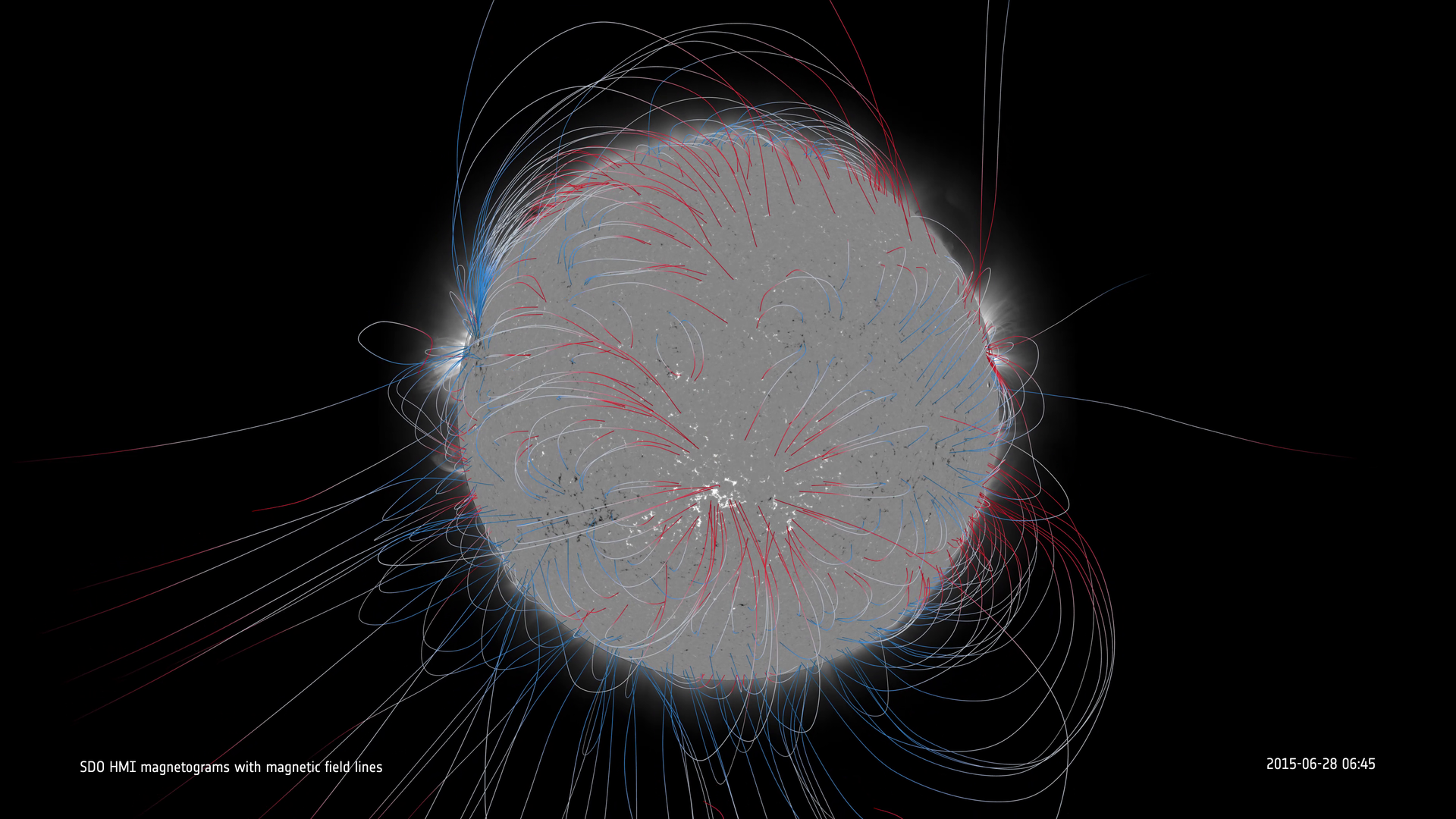16.12.2021

For a mission yet to have entered its main science phase, Solar Orbiter has already generated a lot of great science. Today sees the publication of a wealth of results from the mission’s cruise phase.
Forensic observations of the solar surface, measurements of a giant outburst of energetic particles, and an encounter with a comet’s tail are just some of the highlights out of the more than fifty papers comprising a special issue of Astronomy and Astrophysics and presented today at the annual AGU meeting.
“The results published today demonstrate the variety of solar science that the mission is making possible, and signals the wealth of data that is now flowing back to Earth,” says Yannis Zouganelis, ESA Deputy Project Scientist for Solar Orbiter.


Access the video
Solar Orbiter’s cruise phase began on 15 June 2020, and lasted until 27 November 2021. During that time, the spacecraft acquired scientific data with its in-situ instruments, which are designed to measure the environment around the spacecraft. It also used its remote sensing equipment to look at the Sun in order to characterise and calibrate those instruments. Some of these data turned out to be of such good quality that they enabled the first scientific studies to be undertaken ahead of the main science phase, which began in late November 2021.
Seeing the solar campfires in more detail
When the spacecraft first opened its eyes, following its launch in February 2020, its Extreme Ultraviolet Imager (EUI) discovered a series of miniature solar flares that the scientists nicknamed ‘campfires’. These could play a key role in explaining the million-degree-temperature of the Sun’s outer atmosphere, the corona, which has defied explanation for many decades.


Access the video
In the latest results, the EUI instrument has been acquiring some observations in a ‘high cadence’ mode, returning an image of the solar corona every two seconds. These image sequences are among the highest cadence observations of the solar corona to ever be recorded in the extreme ultraviolet. The data reveals a dynamic class of campfires that shoot out jets of electrified gas known as plasma at speeds of a hundred kilometres per second. These jets are observed to exist for just 10 to 20 seconds.
“We are now getting to the essence of this process,” says Pradeep Chitta, Max-Planck-Institut für Sonnensystemforschung, Göttingen, Germany, who led this study. He likens the past to being like having bad eyesight, and only being able to seeing blurred images. Now, however, EUI is bringing the campfires into sharper and sharper focus.
And the view will only continue to get better as Solar Orbiter gets closer to the Sun. And thanks to an upgrade at the ESA ground stations, the spacecraft can beam back more of the high cadence data than anticipated before launch.
Solar Orbiter's first widespread energetic particle event
As well as the ‘small-scale’ campfires, Solar Orbiter has also witnessed its first large-scale event. On 29 November 2020, the first widespread energetic particle event for several years burst from the Sun.
The Sun goes through a cycle of magnetic activity that lasts approximately 11 years, and this particular event was the first widespread energetic particle event of cycle 25. As the name implies, the event spread particles across a large swathe of the inner solar system. By the time the eruption had reached Earth’s distance, the ejected particles were spread over more than 230 degrees of solar longitude.
They were detected not only by Solar Orbiter, but also by NASA’s Parker Solar Probe and STEREO-A, and the ESA/NASA SOHO spacecraft, all of which were close to Earth’s orbit but at varying solar longitudes. So, the question is how big was the event’s source region on the Sun, and how much did the eruption expand after it was released? This is where Solar Orbiter’s goal of ‘linkage science’ becomes important.


Access the video
“I come from the in-situ observations,” says Alexander Kolhoff, Institut für Experimentelle und Angewandte Physik, Christian-Albrechts-Universität zu Kiel, Germany, who led the analysis of the November event. “We see a particle event around the spacecraft and then go to the remote sensing observations and try to pinpoint the source on the Sun.”
In this particular case, the data is inconclusive about whether the size of the source region alone was large enough to explain the wide spread of particles or not. But the hints in the data are enough to show great promise as the scientists continue to refine this technique.
Tracking down the solar stealth CMEs
Also making painstakingly detailed observations of the solar surface was Jennifer O’Kane, Mullard Space Science Laboratory, University College London, UK. Together with colleagues, she went in search of so-called Stealth CMEs.
CME stands for coronal mass ejection. These are the giant eruptions of solar plasma and magnetic field that usually occur alongside solar flares — an explosive magnetic event in the Sun’s lower atmosphere that ejects the particles out into space. In the case of a stealth CME, however, there doesn’t appear to be an associated flare.
Using the most sophisticated image processing tools available, Jennifer looked at solar images to see if she could find evidence of a triggering event that launched a CME in April 2020.


Access the video
Its magnetic field strength, as measured by Solar Orbiter, was particularly large as well, around double that of a normal CME, but the puzzle was that the visible surface of the Sun was completely blank at that time. There were no sunspots or any other active regions. It was only the high magnetic field strength of the plasma that engulfed Solar Orbiter that alerted the team to the CME in the first place.
After a painstaking search of the data, Jennifer found a dark region in the extreme ultraviolet images that indicated a low-density cavity in the solar corona, that lifted off very slowly from the Sun.
Slow in this context is another relative term. Whereas most CMEs travel at hundreds or even thousands of kilometres a second, this one was moving outwards at tens of kilometres per second.
“It was the most difficult event that I've ever studied,” says Jennifer, referring to how much effort it took to find even a hint of its origin.
From a space weather forecasting perspective, stealth CMEs are a particular challenge because forecasters rely on seeing something on the Sun that they can recognise in real time in order to know that something is incoming that might change the near-Earth space environment.
Rendezvous with a comet’s tail

Lorenzo Matteini, Imperial College London, UK, led another painstaking investigation to determine whether Solar Orbiter has crossed the tail of Comet ATLAS during June 2020.
The possible crossing was predicted shortly after Solar Orbiter’s launch and so the team scrambled to make sure at least some instruments were ready in time to acquire data. By a rather cruel twist of fate, however, just ten days before the crossing, the comet disintegrated under the heat of the Sun and the beautiful tail faded.
Nevertheless, Lorenzo and his colleagues found evidence consistent with a crossing of the comet’s tail remnant in data taken on 4 June. Specifically, they saw the magnetic field around Solar Orbiter suddenly change its polarity, which would be expected if the Sun’s magnetic field were draped around a piece of the broken comet’s nucleus.
“This is the first time that we have encountered a comet tail inside Earth’s orbit,” says Lorenzo.
And it may not be the last. Comets are falling in towards the Sun all the time. The way they interact with the Sun’s magnetic field provides yet another way for Solar Orbiter to investigate this fascinating region of the solar system.
Following its November 2021 flyby of Earth, Solar Orbiter is now in its main science phase. All involved are preparing for its close pass of the Sun in March 2022.
“I couldn’t be more pleased with the mission. These results show both how much great science has already been done, and how much there is still to come,” says Daniel Müller, ESA Project Scientist for Solar Orbiter.
Quelle: ESA
